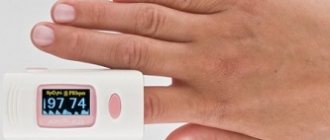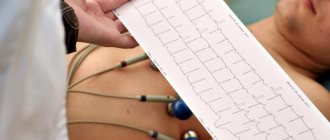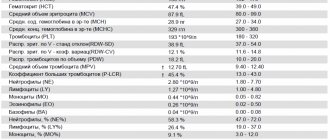Normally, the pulse when walking differs from the indicators at rest by 30-40 beats/min. The final figure on the heart rate monitor depends on the duration and speed of the walk, as well as on the person’s health condition. For example, obese people expend more energy walking, which means their heart rate rises faster. In children, the heart rate when walking (and during rest) is higher than in adults, while closer to adolescence the difference disappears. Of course, for absolutely all athletes, heart rate indicators are directly dependent on the intensity of the workout - the longer and faster you move, the higher the heart rate monitor readings will be.
And yet, there are norms, deviation from which signals health problems. It is important to know them in order to sound the alarm in time. In this article we will tell you what heart rate is considered normal when walking in women, men and children, as well as what to do if your data does not fit within healthy limits. But, before moving on to the numbers, let's find out what this indicator actually affects, why follow it?
A little theory
The pulse is the rhythmic movement of the artery walls that occurs due to cardiac activity. This is the most important biomarker of human health, which was first noticed in ancient times.
In simple terms, the heart “pumps blood” by making jerky movements. The entire cardiovascular system, including the arteries through which blood moves, reacts to these shocks. At the same time, heart rate and pulse are not the same thing, since not every heart beat generates a wave that reaches the radial artery. However, the higher this difference, the greater the so-called pulse deficit, inflated values of which indicate the presence of diseases of the cardiovascular system.
Let's see what effect walking has on heart rate:
- During a walk, the blood is saturated with oxygen, the body becomes healthier, and immunity increases;
- The cardiovascular system is strengthened;
- There is a normal load on all muscle groups, in which the body does not work for wear. Therefore, such training is allowed for the elderly, children, pregnant women, and people who are regaining physical shape after serious illnesses or injuries;
- There is an activation of metabolic processes, wastes and toxins are more actively eliminated, and moderate fat burning occurs.
- Walking is an excellent exercise for preventing varicose veins, and is also one of the few approved sports activities for obese people. During such training, they can easily maintain a normal heart rate, which is important for performance.
In 60 minutes of walking at a moderate pace, you will burn at least 100 kcal.
Normal for women
Walking for ladies is an extremely useful activity. It improves well-being, lifts your mood, and promotes weight loss. Useful for expectant mothers as it provides an additional supply of oxygen.
The normal heart rate when walking in middle-aged women (20-45 years old) is 100 – 125 beats/min. At rest, 60-100 beats/min are considered normal.
Please note that if regular observations show that the values are within the normal range, but are always within the upper limit, this is not a good sign. Especially if other “bells” are observed - pain in the sternum, shortness of breath, dizziness, and other painful sensations. If a woman’s normal pulse rate is regularly exceeded while walking, it is advisable to make an appointment with a therapist who will provide referrals to specialists.
However, high pulse rates do not always signal illness. Often this is just a consequence of a sedentary lifestyle and lack of exercise. Start practicing walking without extreme stress. Gradually increase the speed and duration of the session, constantly monitoring your pulse value. As soon as the latter exceeds the norm, slow down, calm down, then continue. Over time, the body will certainly get stronger.
Normal for men
The normal heart rate when walking in men is not much different from the indicators for women. However, nature still dictates that a man must spend more energy on life activities than a woman. Kill the mammoth there, protect the family from the dinosaur. Men have larger muscles, a skeleton, and other hormonal processes.
Therefore, at rest, a pulse value of 60-110 beats per minute is acceptable for them, but only on condition that the person leads an active lifestyle. The normal pulse during fast walking in men should not exceed 130 beats/min, while a slight “+/-” to the sides is allowed.
It is important to monitor your general condition during the period of highest stress - is there any shortness of breath, tingling in the heart, or weakness. If you have alarming symptoms, it is better to consult a doctor.
How to measure
Heart rate is measured at rest in a quiet and warm room. To carry out the procedure, you will need a stopwatch and an assistant. Approximately an hour before the measurement, you need to eliminate physical and emotional stress and smoking. It is not recommended to take medications or drink alcoholic beverages.
To measure your heart rate, you need to place your palm on your chest
The person whose heart rate will be measured can lie down or sit down. After he takes the desired position, you need to lie down or sit quietly for five minutes.
The assistant places a clean, dry palm on the chest below the left nipple for a man and under the mammary gland for a woman.
It is necessary to determine the impact on the chest at the apex of the heart, which is called the apical impulse. It is heard in half of healthy people in the fifth intercostal space if the person is standing. If you can’t determine it, it means it falls on an edge.
After this, you need to take a stopwatch and start counting the person’s heartbeats for a minute. If the rhythm is incorrect, you need to do this for three minutes, then divide the resulting number by three.
Heart rate can be measured in other places, where the arteries come close to the surface. The pulsation is clearly palpable:
- on the neck,
- under the collarbone,
- at the temple,
- on shoulders,
- on the hip.
When measuring your pulse, to get more accurate results, you need to do it on both sides of the body.
Athletes need to monitor their heart rate during training
Normal in children
So, we have found out what the pulse should be during normal walking for men and women, now we will consider the norm for children.
Remember your little ones: how often do we get touched, where do they get so much energy? Indeed, a child’s body functions much more intensively than an adult’s, and therefore all processes proceed faster. Children are constantly growing, and this requires a lot of effort. This is why a high heart rate when walking in a child is not a violation.
Tall, based on the parameters for adults. For children it is quite normal. Do you remember what is the normal heart rate for an adult when walking, we wrote about this above? From 100 to 130 beats/min. How much do you think a child's heart rate should be when walking? Remember, the normal range is from 110 to 180 beats/min!
At the same time, age is of great importance - closer to 10-12 years, the standard is compared with the indicators for an adult. After walking or at rest, the children's pulse should be in the range of 80-130 beats/min (for children from 6 months to 10 years).
If you are wondering what a child's heart rate should be when walking fast at a specific age, use the universal formula:
A = ((220 - A) - B) * 0.5 + B;
- A – child’s age;
- B – pulse at rest;
- N – pulse value during sports activity;
Let's say your son is 7 years old. You measured his rhythm before walking and got a value of 85 beats per minute. Let's do the calculation:
((220-7)-85)*0.5+85 = 149 beats/min. This indicator for this child will be considered the “golden” norm. Of course, we recommend using special heart rate monitors.
Norm
Normal heart rate in adults ranges from 60 to 80 beats per minute. If the frequency is less than 60, it is bradycardia, if above 80, it is tachycardia.
Resting heart rate will vary depending on:
- person's age;
- his gender;
- body size;
- fitness.
In newborns, this figure is usually 120-140 beats per minute. If the child is premature, the value will be higher - from 140 to 160. In children by one year it decreases to 110-120, by five years - to 100, by 10 - to 90, by 13 - to 80.
In a trained person, the heart rate is lower than normal and averages about 50, while in those leading a sedentary lifestyle it can reach 100 beats at rest.
In women, the heart rate is approximately 6 beats higher than in men, and increases even more before the onset of menstruation.
In a healthy older person, the normal heart rate is usually 80 beats. If this figure rises to 160, then this indicates the presence of a serious illness.
Normal in older people
Almost every person, upon reaching the age of 60, is recommended to take daily walks. Walking helps improve blood circulation, warms up muscles well, and has a general strengthening effect on the entire body. Walking does not cause sudden increases in heart rate, which is why such a load is called gentle.
The normal pulse of an elderly person when walking should not differ from the value for an adult, i.e. it is 60-110 beats/min. However, in their seventh decade, people often have various chronic diseases that in one way or another affect the cardiovascular system.
Acceptable heart rate values when walking for older people should not go beyond 60-180 beats/min. If the indicators turn out to be higher, walk more slowly, rest more, and do not strive to set records. It is still necessary to move, at least to get a good breath of fresh air. If you experience painful tingling in the heart area, dizziness or any other ailments, immediately stop training. If painful manifestations occur frequently, visit a doctor.
What to do if your heart rate is high?
So, now you know what your heart rate should be when walking fast - the norm for women and men of different ages is almost the same. In conclusion, we will tell you what to do if you suddenly find out that your parameters are far from ideal. By the way, this condition is called tachycardia in medicine.
- If your pulse rate jumps while walking, stop, take a deep breath, calm your heart;
- If you have an increased value even at rest, we recommend that you undergo a cardiovascular health test in the hospital.
It is also advisable to lead a healthy lifestyle, stop smoking and drinking alcohol, do not overeat fatty foods, and avoid stress.
If you suddenly have an attack of tachycardia, which is accompanied by acute pain, immediately call an ambulance. While you are waiting for the team, try to find a comfortable position, relax and breathe deeply. If you are interested in heart rate while running, then we recommend reading our material!
Well, now you know what the average heart rate should be when walking for a healthy person - the norm may deviate slightly by +/- 10 beats/min. Try to maintain a healthy range and in this case the walk will not only be pleasant, but also useful. Be healthy.
When it changes
The value is not the same at different times of the day. The indicator changes throughout the day depending on the following factors:
- during physical activity;
- in moments of anger, fear, excitement and other emotions;
- depending on body position (lying, sitting, standing);
- after eating;
- after taking certain medications.
The heart rate increases after eating food, especially hot and protein foods.
When body temperature rises to 37 degrees, it increases by 20 beats.
During sleep it decreases by five to seven units.
Heart rate increases by about 10% when a person is sitting and by 20% when standing.
Heart rate increases:
- when in a stuffy, hot room;
- during stress;
- during physical activity.










